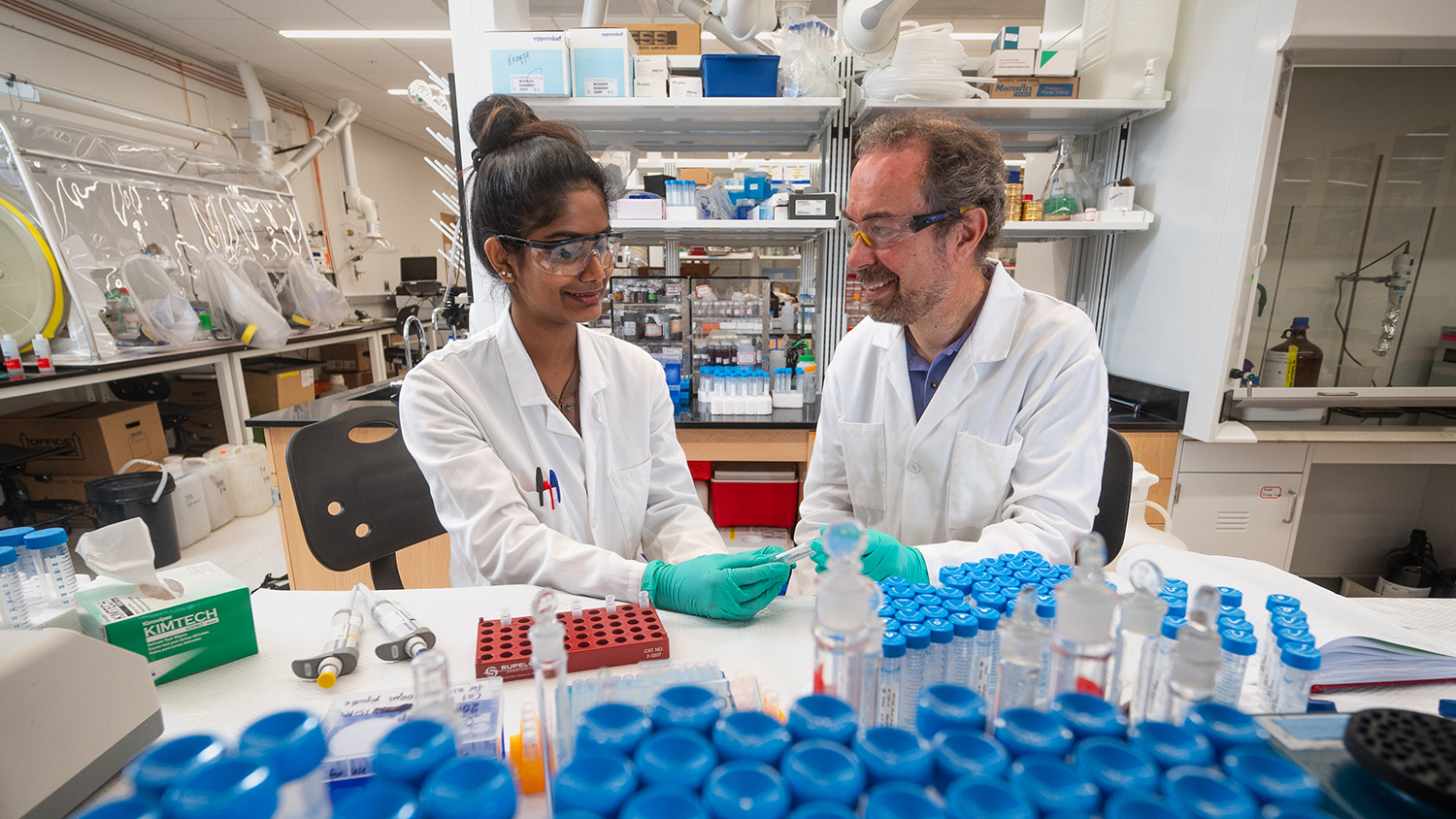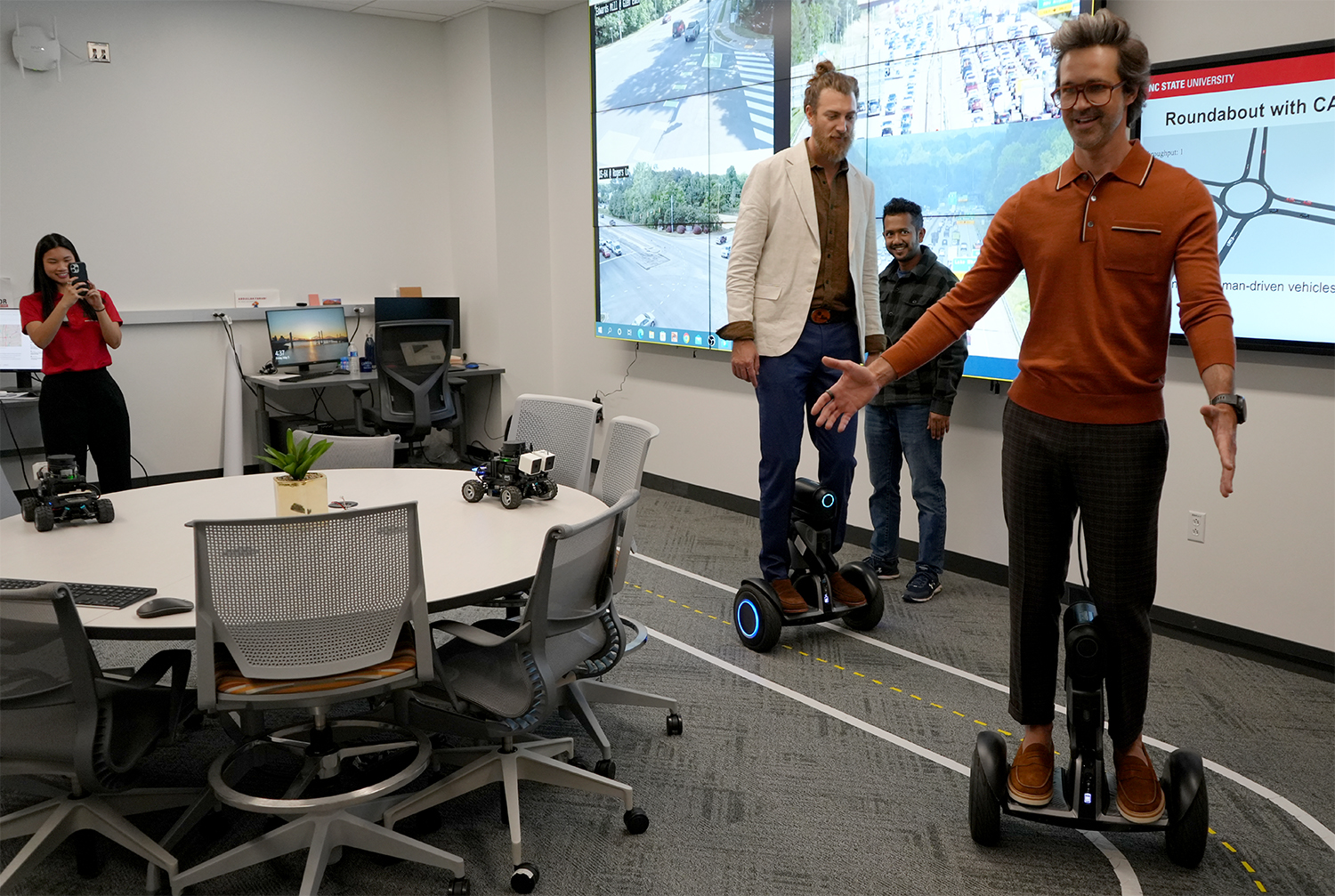More than seven years after the discovery of elevated levels of harmful chemicals in the Cape Fear River that provides drinking water for 1.5 million people, NC State University researchers who brought awareness to this public health issue are continuing to pursue a broad range of research initiatives with the goal of ensuring a cleaner environment and safer drinking water.
Researchers have been trying to find answers to the public’s many questions about the long-term effects of these chemicals on our water, food and health. One of many important issues being addressed by NC State researchers is how to remove “forever chemicals” from drinking water.
Detlef Knappe, S. James Ellen Distinguished Professor of Civil, Construction, and Environmental Engineering, was one of the first to bring attention to per- and polyfluoroalkyl substances (PFAS), after publishing a 2016 paper on elevated levels of PFAS in the Cape Fear River watershed. He is now deputy director of the NC State Center for Environmental and Health Effects of PFAS.
PFAS consist primarily of carbon and fluorine atoms. Over 14,000 PFAS structures are known, but health effects for most PFAS are not well understood. Of the few PFAS that have been extensively studied, adverse health outcomes include cancer, immunotoxicity, ulcerative colitis and high cholesterol.
Known as “forever chemicals,” many PFAS are extremely difficult to break down and are widely found in water and soil. They are used in a variety of consumer products including non-stick pans, food packaging and firefighting foam. In 2023, the U.S. Environmental Protection Agency proposed nationwide drinking water standards to limit human exposure to six PFAS.
Scaling up water treatment processes
According to the Environmental Working Group, an estimated 200 million people in the U.S. could be drinking water containing PFAS. Improving and scaling up water treatment methods is therefore a top priority.
Several ongoing and recently completed projects are focused on granular activated carbon (GAC), which is an adsorption medium made from wood, coconut shells or coal. It is the most widely used method to remove PFAS from drinking water.
Water treatment facilities process millions of gallons of water per day. On an average day, the City of Raleigh treats approximately 50 million gallons. Selecting cost-effective treatment materials and optimizing process design are critical to assuring the affordability of drinking water. Knappe’s research supports design engineers and drinking water providers in this effort to optimize the use of GAC.
In one project, Knappe and his research team are developing experimental approaches to predict GAC performance from bench-scale experiments. In the lab, GAC particles are crushed to be about 13 times smaller than they are in full-scale treatment systems to speed up experiments. The researchers can simulate 170 days of full-scale operation in a one-day bench-scale column study. In conjunction with mathematical models, Knappe’s research team can predict GAC treatment effectiveness for a wide range of PFAS, drinking water sources and GAC types.
NC State is working together with Arizona State University on another related project to see what’s happening inside of GAC particles. Particles are sectioned with a focused ion beam under cryogenic conditions and then examined using scanning electron microscopy and energy dispersive X-ray spectroscopy. Understanding what’s happening inside these particles will help develop better mathematical models to predict how PFAS are removed by GAC and how much GAC is needed to meet a water provider’s needs.
In another project, one of Knappe’s master’s students developed a GAC treatment database and a machine learning model to predict GAC performance from readily available data for pollutant properties, GAC characteristics and water quality.
It’s very rewarding to conduct research that helps answer questions people in impacted communities have.
– Detlef Knappe
Researchers are also exploring ways GAC can be reused, which could help reduce PFAS treatment costs. GAC can be thermally reactivated and reused, but researchers are still trying to understand how PFAS respond to thermal reactivation.
“We are trying to understand whether PFAS-laden GAC can be safely reactivated by identifying reactivation conditions at which PFAS are completely destroyed,” Knappe said. “It is important to not introduce products of incomplete destruction into the air and to assure that the reactivated GAC product can be reused safely and effectively. Thermal reactivation and subsequent reuse of GAC reduces costs to drinking water providers and is likely preferable to disposing spent GAC in landfills.”
While working on improving large-scale water treatment is critical, the most frequent question Knappe gets from people living in affected communities is which home filtration system to install.
To answer this question, NC State and Duke University researchers looked into the effectiveness of home filtration systems in a 2020 open-source paper that has been viewed more than 50,000 times. Under-sink reverse osmosis and two-stage filters effectively removed PFAS to the reporting limit of analytical methods, whereas activated carbon filters used in pitchers, refrigerators and faucets resulted in partial PFAS removal.
“Until 2013 or so, I rarely reached out to people who were not water treatment professionals or academic colleagues. Now I can almost not imagine doing research where I wouldn’t interact with people living in communities impacted by environmental contamination,” Knappe said. “It’s very rewarding to conduct research that helps answer questions people in impacted communities have.”
- Categories:



